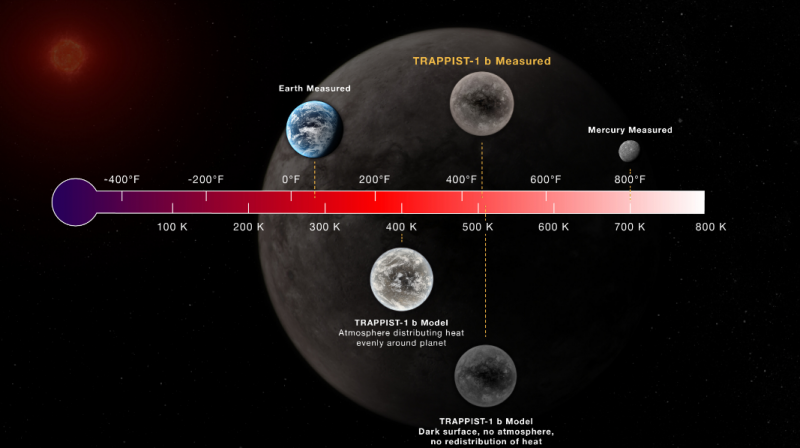
USA: The temperature of TRAPPIST-1 b, a rocky Earth-like exoplanet, was measured using the James Webb Space Telescope (JWST). It's worth noting that this is the "first detection of any kind of light emitted by an exoplanet" that is "as small and cold as the rocky planets in our own solar system." Here are more details on how JWST achieved this success.
Astronomers have long been curious about planets outside our solar system because they can shed light on whether life exists elsewhere in the universe.
The JWST is achieving one milestone after another, from allowing us to see the deepest parts of the universe to now demonstrating its ability to study Earth-sized exoplanets in an unprecedented way.
Also Read: How to configure Twitter for app-based two factor authentication.
Webb's onboard instrument, known as the Mid-Infrared Instrument (MIRI), was used to make the measurements, which NASA describes as a "giant touch-free thermometer."
Webb's MIRI calculated the exoplanet's thermal emission, which is heat energy emitted as infrared light. The findings revealed that the TRAPPIST-1 b exoplanet has a daytime temperature of 230 °C.
According to NASA, TRAPPIST-1 is the most studied planetary system outside our solar system. It is about 41 light years away from the Sun.
Also Read: Where and when to view Mercury, Jupiter, Venus, Uranus, and Mars as they align in the night sky
The TRAPPIST-1 star, which is orbited by seven exoplanets, is at the center of this planetary system. It is interesting to note that these seven exoplanets resemble the inner, rocky planets of our solar system in terms of mass and size.
According to Thomas Green, lead author of the study, no previous telescope had the sensitivity to detect such faint mid-infrared light. TRAPPIST-1 b, the closest exoplanet to the TRAPPIST-1 star, has a high temperature, which suggests that the planet has no atmosphere.
Earlier observations by the Hubble and Spitzer space telescopes showed no sign of atmosphere on any of the TRAPPIST-1 planets.
The researchers used secondary eclipse photometry, which measures changes in brightness from the system as the exoplanet moves further from its parent star, to determine TRAPPIST-1 b's temperature.
The team calculated the amount of infrared light emitted by the exoplanet by subtracting the brightness of the star from the brightness of the star and exoplanet together.
According to a NASA blog post, "The detection of a secondary eclipse by Webb is a major milestone in itself." More secondary eclipse observations of TRAPPIST-1 b are currently being performed.
Ultimately, based on these observations, scientists will be able to track the exoplanet's temperature changes between its day and night and determine whether it has an atmosphere.
Also Read: Temperature of rocky planet has been determined first time, Read how ?
The emissions from a rocky, temperate planet have never been seen before, according to study co-author Pierre-Olivier Lagage. This is an important development in the search for exoplanets.